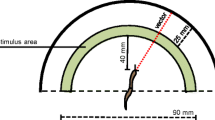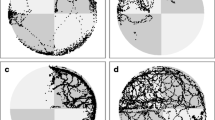Abstract
Four groups of 11 goldfish were given different kinds of experiences with a light stimulus later to be used as a CS for two-way, active avoidance conditioning. For one group, the light was repeatedly paired with food; for another, the light was paired with inescapable shock; a third group received light-only presentations (habituation); a control group never experienced the light before testing. In avoidance conditioning testing, the shock-related and food-related groups performed significantly better than the control group, which in turn outperformed the habituated group. It is concluded that the acquisition of an orienting reaction to a CS outweighs the positive-vs-negative source of that OR.
Similar content being viewed by others
Reference
Lynn, R.: Attention, Arousal, and the Orientation Reaction. New York, Pergamon Press, 1966.
Author information
Authors and Affiliations
Rights and permissions
About this article
Cite this article
Braud, W.G. Effectiveness of “neutral,” habituated, shock-related, and food-related stimuli as CSs for avoidance learning in goldfish. Conditional Reflex 6, 153–156 (1971). https://doi.org/10.1007/BF03000381
Issue Date:
DOI: https://doi.org/10.1007/BF03000381




